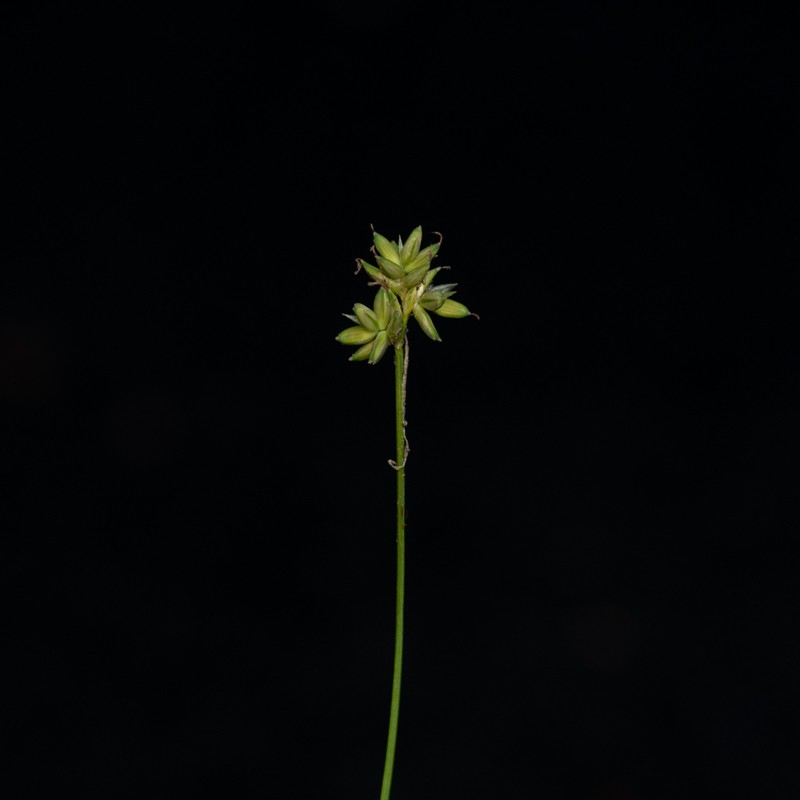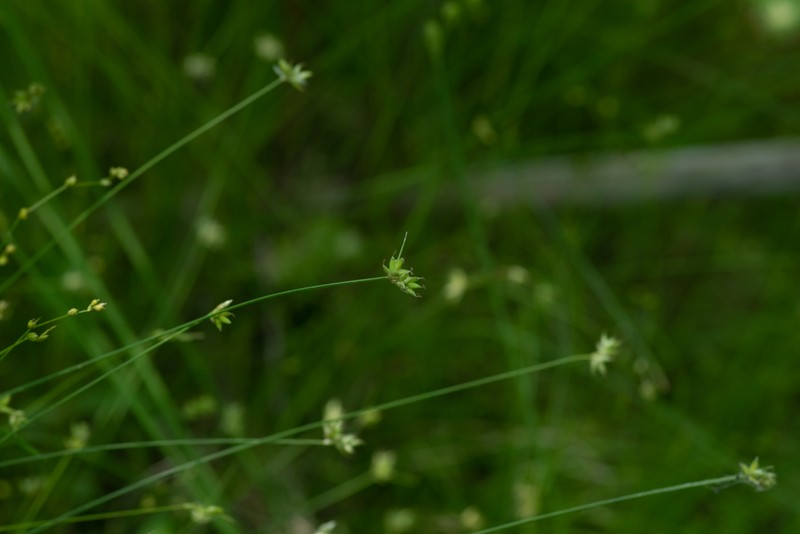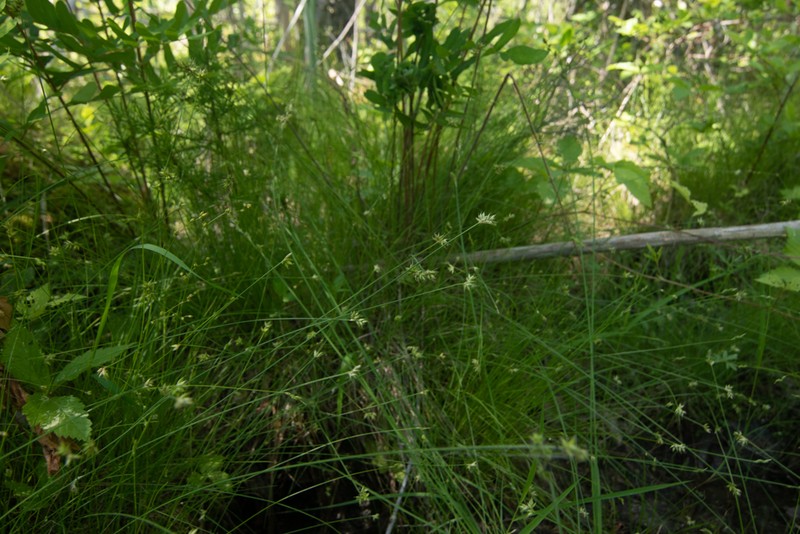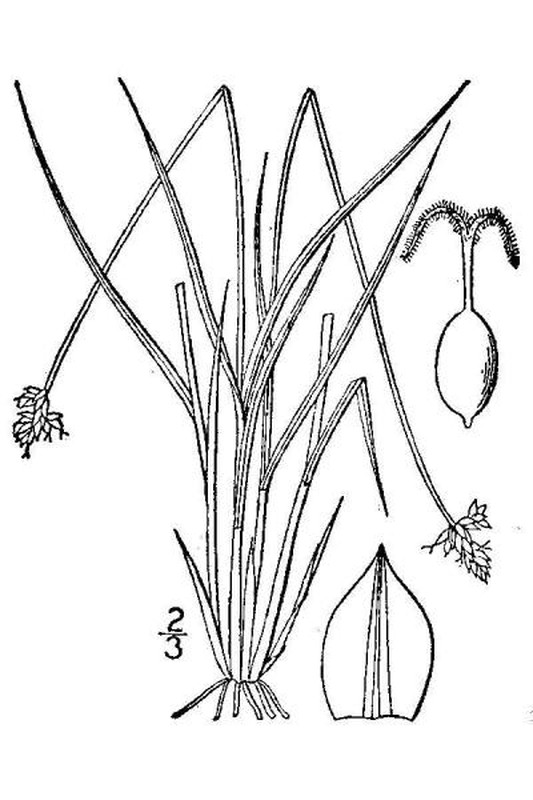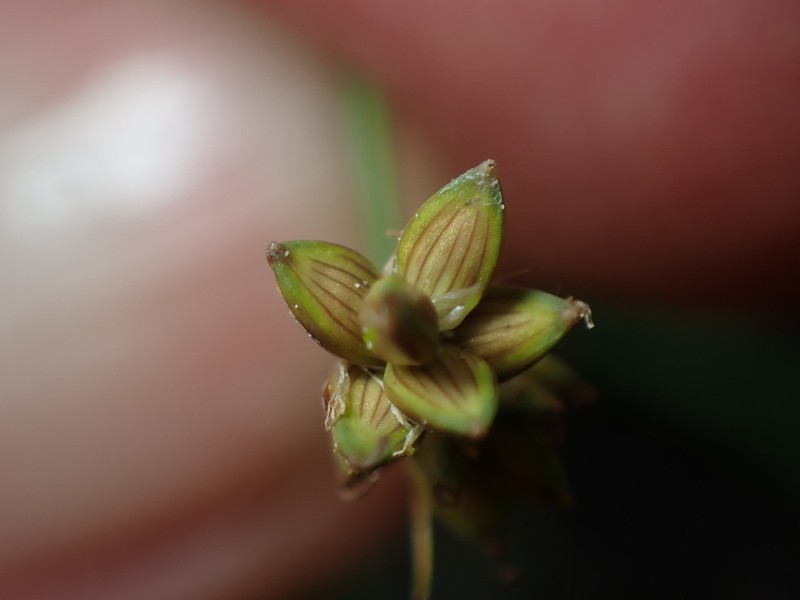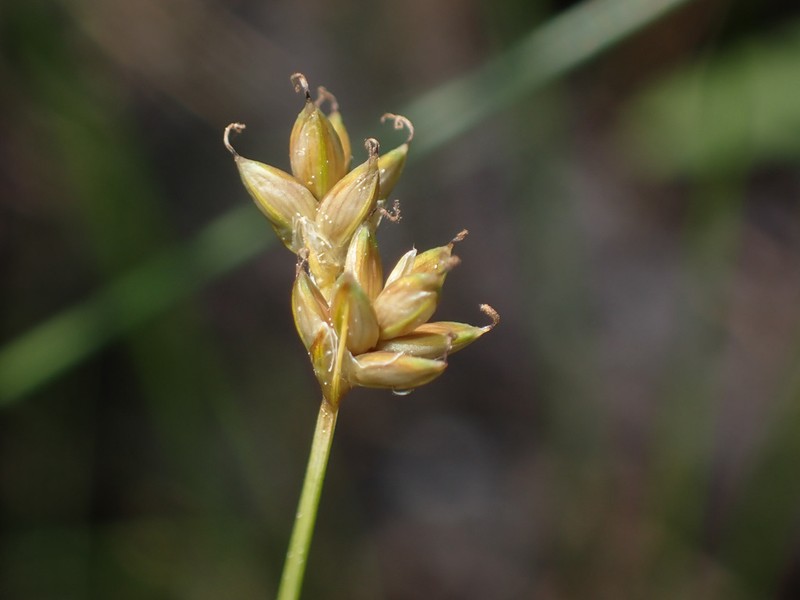Sparse-flowered Sedge
Carex tenuiflora Wahlenb.
- Class
- Monocotyledoneae (Monocots)
- Family
- Cyperaceae (Sedge Family)
- State Protection
- Endangered
Listed as Endangered by New York State: in imminent danger of extirpation in New York. For animals, taking, importation, transportation, or possession is prohibited, except under license or permit. For plants, removal or damage without the consent of the landowner is prohibited.
- Federal Protection
- Not Listed
- State Conservation Status Rank
- S1S2
Critically Imperiled or Imperiled in New York - Especially or very vulnerable to disappearing from New York due to rarity or other factors; typically 20 or fewer populations or locations in New York, very few individuals, very restricted range, few remaining acres (or miles of stream), and/or steep declines. More information is needed to assign either S1 or S2.
- Global Conservation Status Rank
- G5
Secure globally - Common in the world; widespread and abundant (but may be rare in some parts of its range).
Summary
Did you know?
The species name, tenuiflora, means slender-flowered. The most obvious distinguishing characterstic of the species is the three small spikes bunched closely together at the end of the slender stem.
State Ranking Justification
There are four known occurrences and relatively few historical occurrences of this species, so it may have always been somewhat rare in the state. The ecological reasons for its rarity are unclear. While this species is near the southern limit of its range in New York, it occupies habitat similar to that of many more common sedges. It is also a species of concern in the state of Maine.
Short-term Trends
Two of the three known existing locations are recently-rediscovered historical occurrences. Their population trends will be revealed by monitoring in the years to come.
Long-term Trends
Based on the scant historical record, this sedge may never have been common in New York. Additional inventory at known historical locations is needed to determine long-term trends.
Conservation and Management
Threats
This sedge has typically been found in somewhat rich, saturated soils in conifer or shrub swamps. Disturbances which change the hydrologic regimes could threaten the survival of this species. Herbivory is another potential threat.
Conservation Strategies and Management Practices
The wetlands which provide habitat for this species should be protected from changes in water quality or hydrologic regime.
Research Needs
Reseach is needed to determine the habitat requirements and complete distribution of this species in New York.
Habitat
Habitat
In New York this species grows in saturated (and typically, rich) peatland soils. It is known from cedar swamps, rich shrub fens, and shrub swamps (New York Natural Heritage Program 2007). Sphagnum bogs, bog forests, and peaty shores (Voss 1972). Wet woods and bogs (Gleason and Cronquist 1991).
Associated Ecological Communities
- Northern white cedar swamp
(guide)
A swamp that occurs on organic soils in cool, poorly drained depressions in central and northern New York, and along lakes and streams in the northern half of the state. These swamps are often spring-fed with continually saturated soils. Soils are often rich in calcium. The characteristic tree is northern white cedar, which makes up more than 30% of the canopy cover.
- Rich graminoid fen*
(guide)
A wetland of mostly grasses usually fed by water from highly calcareous springs or seepage. These waters have high concentrations of minerals and high pH values, generally from 6.0 to 7.8. Plant remains do not decompose rapidly and these grasses usually grow on older, undecomposed plant parts.
- Rich shrub fen
(guide)
A wetland with many shrubs that is usually fed by water from springs and seeps. These waters have high concentrations of minerals and high pH values, generally from 6.0 to 7.8. Plant remains in these fens do not decompose rapidly and thus the plants in these fens usually grow on older, undecomposed woody plant parts.
- Shrub swamp
(guide)
An inland wetland dominated by tall shrubs that occurs along the shore of a lake or river, in a wet depression or valley not associated with lakes, or as a transition zone between a marsh, fen, or bog and a swamp or upland community. Shrub swamps are very common and quite variable.
* probable association but not confirmed.
Associated Species
- Acer rubrum
- Andromeda polifolia
- Betula pumila (bog birch)
- Calla palustris (wild calla)
- Carex canescens
- Carex leptalea (bristle-stalked sedge)
- Carex stricta (tussock sedge)
- Chamaedaphne calyculata (leatherleaf)
- Drosera rotundifolia (round-leaved sundew)
- Eriophorum virginicum (tawny cotton-grass)
- Myrica gale (sweet gale)
- Photinia melanocarpa
- Pogonia ophioglossoides (rose pogonia)
- Salix pedicellaris (bog willow)
- Spiraea tomentosa (steeplebush)
- Thelypteris palustris
- Thuja occidentalis (northern white cedar, arbor vitae)
- Toxicodendron vernix (poison-sumac)
- Typha sp.
- Utricularia intermedia (flat-leaved bladderwort)
- Vaccinium macrocarpon (cranberry)
Range
New York State Distribution
Carex tenuiflora is found in northern New York, chiefly in the Adirondacks, the Tug Hill Plateau and the St. Lawrence and Black River Valleys. There is also a single historical record from Erie County in western New York.
Global Distribution
Carex tenuiflora has a circumboreal distribution, in North America extending south to the northern tier of the United States, including Washington and Montana (and disjunct to Colorado), and from Minnesota to Maine in the northeast.
Identification Comments
General Description
Thin-flowered sedge forms loose clumps with slender, 15 to 60 cm high stems, arising from creeping rhizomes. The leaves are ca. 1 mm wide. Flowers are borne in 2-4 small spikelets, held upright and grouped together in a cluster at the top of the stem. A few male flowers (recognized by the old stamens) occur at the base of each spike. The whitish, papery scales have a green center, and are as long as the perigynia that they subtend. The pale green, narrowly elliptic perigynia are ca. 3 mm long and tapered, but beakless. There are 2 styles and the seed achene is lens-shaped.
Best Life Stage for Proper Identification
For positive identification specimens with mature perigynia are needed.
Similar Species
In vegetative form this species is very similar to Carex disperma and C. trisperma, with which it may grow, but the spikes of C. tenuiflora are crowded together while those of the preceding two species are well-separated. Carex heleonastes, which is found in the same calcareous wetland habitat as C. tenuiflora, has brownish scales and distinctly beaked perigynia. The other Carex species in section Heleonastes found in New York either are found in brackish habitats (C. glareosa) and/or have beaked perigynia.with subtending scales shorter than the perigynia.
The form and spikelets of Carex interior, in the Stellulatae group, are similar to those of Carex tenuiflora, but C. interior has minutely-beaked perigynia not visible beneath their slender scales.
Best Time to See
In New York state most collections of Carex tenuiflora have been made in late June, with mature fruit present.
- Fruiting
The time of year you would expect to find Sparse-flowered Sedge fruiting in New York.
Sparse-flowered Sedge Images
Taxonomy
Sparse-flowered Sedge
Carex tenuiflora Wahlenb.
- Kingdom Plantae
- Phylum Anthophyta
- Class Monocotyledoneae
(Monocots)
- Order Cyperales
- Family Cyperaceae (Sedge Family)
- Order Cyperales
- Class Monocotyledoneae
(Monocots)
- Phylum Anthophyta
Additional Common Names
- Sedge
Additional Resources
Best Identification Reference
Gleason, Henry A. and A. Cronquist. 1991. Manual of Vascular Plants of Northeastern United States and Adjacent Canada. The New York Botanical Garden, Bronx, New York. 910 pp.
Other References
Fernald, M.L. 1950. Gray's manual of botany. 8th edition. D. Van Nostrand, New York. 1632 pp.
Holmgren, Noel. 1998. The Illustrated Companion to Gleason and Cronquist's Manual. Illustrations of the Vascular Plants of Northeastern United States and Adjacent Canada. The New York Botanical Garden, Bronx, New York.
House, Homer D. 1924. Annotated list of the ferns and flowering plants of New York State. New York State Museum Bulletin 254:1-758.
New York Natural Heritage Program. 2010. Biotics database. New York Natural Heritage Program. New York State Department of Environmental Conservation. Albany, NY.
New York Natural Heritage Program. 2024. New York Natural Heritage Program Databases. Albany, NY.
Voss, E.G. 1972. Michigan Flora, Part I. Gymnosperms and Monocots. Cranbrook Institute of Science Bulletin 55 and the University of Michigan Herbarium. Ann Arbor. 488 pp.
Weldy, T. and D. Werier. 2010. New York flora atlas. [S.M. Landry, K.N. Campbell, and L.D. Mabe (original application development), Florida Center for Community Design and Research http://www.fccdr.usf.edu/. University of South Florida http://www.usf.edu/]. New York Flora Association http://newyork.plantatlas.usf.edu/, Albany, New York
Links
About This Guide
Information for this guide was last updated on: November 4, 2022
Please cite this page as:
New York Natural Heritage Program. 2024.
Online Conservation Guide for
Carex tenuiflora.
Available from: https://guides.nynhp.org/sparse-flowered-sedge/.
Accessed July 27, 2024.
